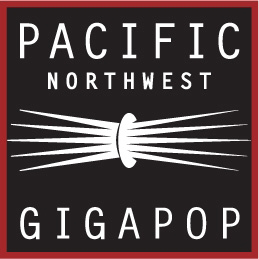Australia-US partnership powers trans-Pacific science and research networking
A long-standing Australia-United States (US) joint venture to facilitate research and education (R&E) network capacity across the Pacific Ocean was celebrated on 28 April 2015 at a special event held at the Embassy of Australia in Washington DC.
AARNet provides the network infrastructure connecting Australia to the US West Coast in partnership withSouthern Cross Cable Network (SCCN). With the very generous support of SCCN, AARNet is upgrading the submarine optical fibre links known as SXTransPORT to 100 Gbps by the end of 2016. Building on a series of investments, the US National Science Foundation (NSF) this week announced funding for upgrading the US side of the infrastructure interconnecting AARNet to the US research networks.
Technology leaders from AARNet, NSF, REANNZ, Internet2, Pacific Wave and the University of Hawaii were among the guests celebrating the ongoing international collaborative effort that has contributed to the development of the trans-Pacific research network infrastructure over many years.
AARNet CEO Chris Hancock said this investment continues the strong relationship between the NSF and Australia for interconnecting AARNet to the US R&E community that dates back to the early 1990s. The relationship has been characterized by aligned and supportive network investments on both sides of the Pacific.
“AARNet’s upgrades to the SCCN and SXTransPORT links have been critical for accommodating the growth of international traffic over the network, largely driven by data-intensive science. Developing international R&E network capacity between Australia and the US has also evolved into a truly Pacific activity, with AARNet recently connecting REANNZ, the New Zealand NREN, as well as supporting connectivity into Pacific Island countries such as Fiji, Tonga and the Marshall Islands,” said Hancock.
Jim Kurose, Assistant Director of NSF’s Computer and Information Science and Engineering Directorate said the award builds on successful, proven prior partnerships between the Australian Government and the NSF.
“The funding will provide a critical network upgrade to the US end to accommodate today’s data-intensive science and to drive scientific discovery in many areas, including astronomy, oceanography, and high-energy physics,” he said.
The forthcoming upgrade will support US connectivity that passes through Hawaii to connect one of the world’s most important international astronomy sites, Mauna Kea (Hawaii Island), as well as the international observatories on Haleakala (Maui).
Australia’s Ambassador to the USA Kim Beazley acknowledged the vital role globally interconnected research network infrastructure plays.
“The Embassy of Australia is pleased to celebrate the continued Australia-US partnership in critical research infrastructure and the advanced Pacific R&E network connection. The project builds on a rich history of research collaboration between our two nations, and will greatly expand opportunities to work together in areas of mutual interest, including astronomy, global climate issues, biodiversity, and coral reef study, and medicine,” he said.
http://news.aarnet.edu.au/australia-us-partnership-powers-trans-pacific-science-and-research-networking/
